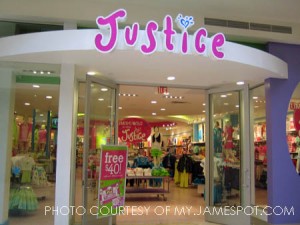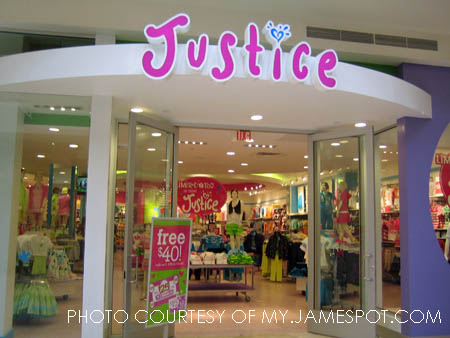
The conversion of teen clothing store Limited Too into Justice happened about four years ago. Tween Brands, the company owning Limited Too and Justice, most likely initiated the change in response to the economic recession.
The economy caused Justice to drop the price of their clothing clothing 25 percent in order to compete with and replace Limited Too. Justice succeeded Limited Too stores because Too failed to capitalize on their younger demographic.
These clothes often include brand endorsed T-shirts, frilly ruffly skirts, bright pink or blue tights, intricate headbands and excessively beaded jackets. At this age, Justice’s “just for girls” slogan describes an age of girly girls who are too young to want to dress older, but old enough to have outgrown the Disney princess phase.
Michael Rayden, Justice CEO, describes the key to Justice’s success in marketing specifically to girls through mailing coupons in catazines; or a combination of catalogs and magazines.
“We mail 14 editions a year—around 75 million of them— and they’re all style guides. Each catazine corresponds with a new fashion set we have arriving, and it shows the girls how everything goes together. Often, the girl and her mom will pre-shop together,” said Rayden.
Pre-shopping is reserving or ordering clothes online before picking them up at a Justice store location.
With this in mind, approaching Justice for the first time since my preteen years was shocking. The apparel, design and layout of Justice was completely different than the chic and contemporary styles at Limited Too.
Justice has shed Limited Too’s teenage image, and it reflects in their lack of basic clothing staples. They no longer carry quality denim jeans, plain camis, sweaters or creatively designed long and short-sleeved shirts.
It is now comprised of excessively printed crop tops with built-in camis, tank tops, skirts and athletic and jean shorts. The store’s overuse of print is meant to encourage consumers to buy a surplus of unique outfits instead of basic pieces of clothing which can create several outfits.
The store’s aesthetics have morphed from modern and stylish to bright and girly.
Loud pop music such as Carly Ray Jepson’s “Call Me Maybe” can be heard in the background and stuffed animals line the shelves along with poofy, ridiculous polka-dotted shirts, dresses and pants.
Rayden feels these components are important in attracting a fun and friendly store environment: “You also have to appeal to their senses. They [young girls] love sensory overload—bright colors, music videos, a variety of merchandise, the tumult of all of that.”
Justice no longer sells my favorite, thick demin and half-size jean collections. The material of clothes is generally thinner and the clothing style has also significantly deteriorated.
The clothes look as though designers were trying too hard to be unique and hit a creative rock bottom. Otherwise normal clothes featured unnecessary fringe, patterns, beads, sparkles and layers.
Shopping at Justice, customers should expect exactly what they pay for: clothes cheap in style and price. However, Justice’s marketing is smart, so their popularity is only expected to grow.

Leave a Reply